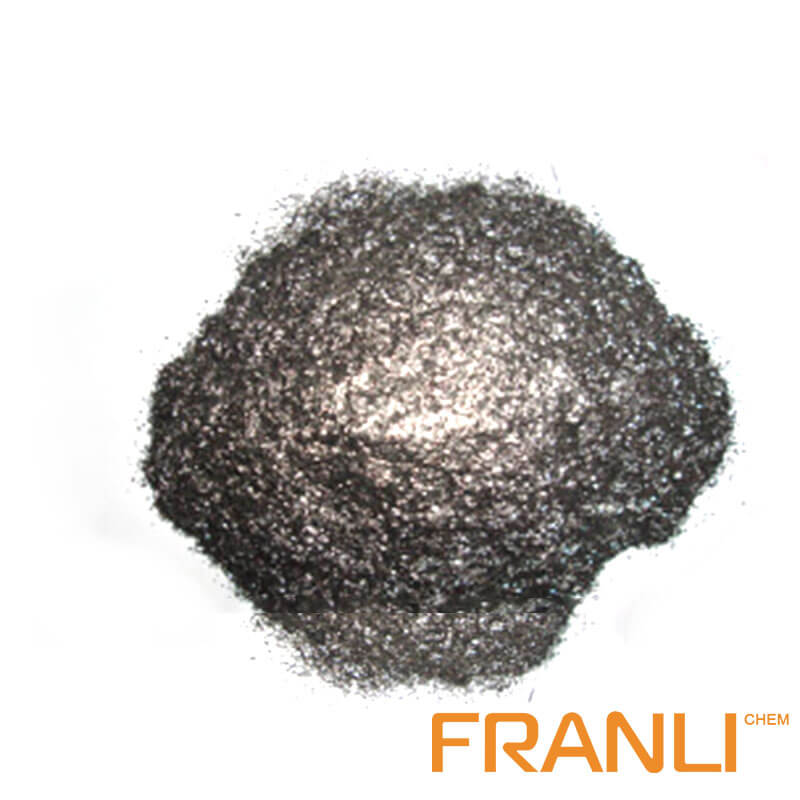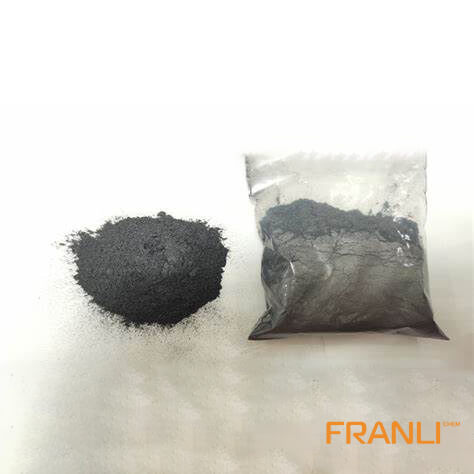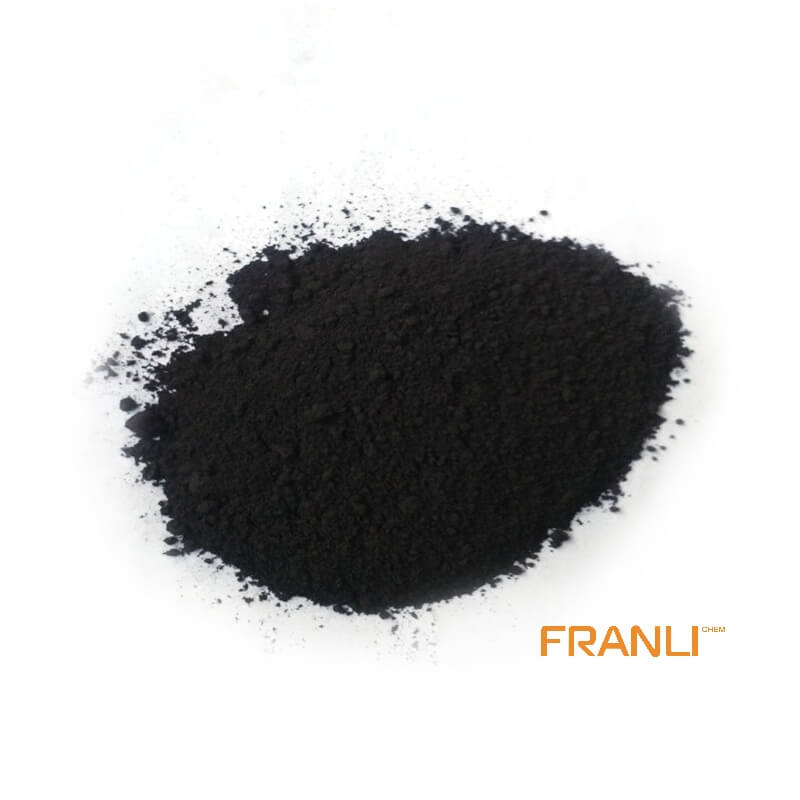


Flake Graphite
Size
0.01mm
Carbon Content
99%min
Package
25kg small bags into ton bags
Origin
China
Features
thermal shock resistance, lubricity, conductivity and plasticity…
Application
Lead battery plates positive and negative conductive agent, lithium batteries nickel hydrogen etc
Natural flake graphite has superior physical and chemical properties and is widely used in metallurgy, coatings and refractory industries. It is an important non-metallic raw material that is indispensable for today’s high-tech. Flake graphite is divided into large flake graphite and fine flake graphite according to the size of its scales. Usually, large flakes refer to +32 mesh, +50 mesh, +80 mesh, and +100 mesh flake graphite.
Request a quote-
Introduction
Flake graphite has unique physical and chemical properties and plays an important role in strategic emerging industries. All countries regard graphite as a strategic mineral and have issued policies conducive to the development of the graphite industry. The graphite policies of the major developed countries in the world, such as the United States, Germany, and the United Kingdom, tend to research and develop deep-processing products, while African countries such as Tanzania and Mozambique tend to develop and utilize their own graphite resources. Since China listed flake graphite as a strategic mineral in 2016, graphite industry policy tends to shift from rational development and utilization to research and development of graphite products in strategic emerging areas. This paper analyzes the graphite-related industrial policies of the world and China and puts forward countermeasures and suggestions.
Flake graphite has excellent properties such as high-temperature resistance, corrosion resistance, heat conduction, and conductivity, and its products are widely used. Graphite consumption used to be concentrated in refractory and casting fields for a long time, but with the peak of China’s steel consumption, the growth rate of graphite consumption slowed down. The consumption of graphite high-end material grade products such as high-purity graphite, spheroidized graphite, and graphite fluoride is increasing rapidly in strategic emerging industries such as new energy vehicles, energy storage, nuclear energy, electronic information, aerospace technology, and the consumption of graphite is changing from traditional industries to strategic emerging industries.
As a result, many countries in the world have issued a series of policies for graphite. For example, in the “key materials strategy” issued by the United States in 2001, graphite materials and graphene are included in the key development content; In 2016, China listed flake graphite as a strategic mineral for the first time, which requires strengthening the protection and rational utilization of high-quality graphite resources. This paper summarizes the graphite industry policies of the world and China, and puts forward some suggestions on strengthening the strategic reserves of graphite, rationally distributing the development of graphite, encouraging the research and development of key technologies of emerging products, and rationally utilizing foreign graphite resources.

-
China’s Graphite resources have significant advantages
China is a country with large graphite resources, with 73 million tons of graphite reserves in 2018, accounting for 24.3% of global graphite reserves, ranking second in the world; China is the largest producer of graphite, with an output of 1.25 million tons in 2018, accounting for 73.5% of the world; China is the largest graphite consumer, with a consumption of 1.02 million tons in 2018, accounting for 59.91% of the world’s Graphite consumption; China is the largest exporter of graphite, with an export volume of 339700 tons in 2018, accounting for 77.3% of the global total. From the perspective of deposit types, China is dominated by flake graphite, which has higher economic value and significant resource advantages. Although China’s Graphite reserves rank second in the world, as of 2018, China’s Graphite resources amount to 537 million tons, including 437 million tons of flake graphite (mineral) resources, 81.33%, which can meet the demand of China’s strategic emerging industries for graphite resources.
-
Summary of world graphite industry policy
Graphite and its products are closely related to strategic emerging industries such as new energy vehicles, nuclear energy, electronic information, aerospace, and other strategic industries. Graphite resources and deep processing products have been highly valued by governments. The United States, Japan, Australia, and other countries and the EU regard graphite as “key minerals” or “strategic minerals”, The major industrial developed countries in the world have issued industrial policies on graphite development, encouraging global control of graphite resources, a strategic reserve of graphite resources, and key technology research of graphite products. As early as 2006, Japan encouraged private enterprises to develop graphite resources overseas, and graphite was included in key minerals in 2012. In 2009, the German electric vehicle development plan focuses on the development of graphite anode materials for lithium-ion batteries; In 2014, the EU announced the raw materials related to the life and death of the EU, and listed 20 important mineral materials including graphite on the list of “key” raw materials; In 2001, the new mineral resources safety law of the United States listed graphite as the “key minerals” needed for the automobile and energy industries, formulated the federal strategy to ensure a reliable supply of key minerals, put forward 61 concrete measures to guarantee the supply of key minerals such as graphite, promote the “resource independence” and strengthen the domestic supply of key minerals.
The United States, Germany, the UK, Japan, Australia, South Korea, and other countries have carried out strategic reserves of graphite resources due to their lack of graphite resources. On the one hand, they restrict domestic exploitation, on the other hand, invest in the development of graphite in other countries, and set up processing plants. The mines and processing plants owned by graphitkropfmuhla GK are all over the world. In this way, it cooperates with Shanxi Quanhai graphite Co., Ltd. in China to build a special graphite production plant to provide graphite for nuclear reactors. In 2015, the Australian listed company (Syrah resource es, ASX: Syr) invested $145million to exploit the largest graphite mine in Mozambique and planned to establish a lithium battery-grade graphite plant. In the application of graphite materials, the development direction of the main developed countries is graphite in the field of graphite deep processing
In terms of olefin and high-purity flexible materials, South Korea also proposed to invest 500million won to develop weapons systems such as graphite bombs that can paralyze enemy systems in wartime. Developing countries such as India and Tanzania encourage graphite exploration and development of their own resources and propose that the state has a certain share.
-
Analysis of China’s graphite industry policy
In recent years, flake graphite, as one of the strategic minerals in China, has attracted great attention from the national and local governments. A series of policies and measures have been formulated in the aspects of resource exploration and development, graphite deep processing technology, resource protection and utilization, foreign investment, import and export, which has effectively promoted the healthy development of China’s graphite industry. Through combing, China has 21 relevant graphite industry policies, including 3 policies related to resource exploration and exploitation; 2 Comprehensive Utilization Policies; There are 15 R & D policies for deep processing technology products and 1 import and export policy. It can be seen that China’s graphite industry policy is gradually shifting from exploration and mining to the planning and research and development of graphite deep processing products, which is closely related to the changes in domestic and international graphite consumption market patterns.
-
Policy implications, problems, and suggestions
5.1 The positive impact of policy
(1) The amount of graphite resources in China has increased significantly, especially in the recent five years. The resource volume increased from 259million tons in 2014 to 537million tons in 2018, an increase of 104%, among which the amount of flake graphite (mineral) resources increased from 223million tons in 2014 to 437million tons in 2018, further consolidating the status of China’s largest graphite resource. Compared with the countries and regions that rely on foreign resources in the United States, Japan, South Korea, and Europe, China’s flake graphite resources can provide strong support for the development of strategic emerging industries and have a certain regulatory capacity in the international market.
(2) Influenced by the policy of the state to encourage the development of graphite deep processing industry, graphite and graphene industrial parks have developed vigorously, such as Luobei Yunshan, Jixi Hengshan (capital of China’s graphite industry), Pingdu Ming Village graphite Industrial Park, graphite Industrial Park, Nansha Town, Inner Mongolia Fuxing and (Ruisheng new energy) graphite Industrial Park Hunan Rutang graphite Industrial Park, led by South graphite Co., Ltd., is expected to increase the domestic production capacity of 150000 tons of spheroidized graphite in 2019. As of March 2018, there are 21 graphene research institutes or industrial bases under construction or built-in all parts of the country, including Changzhou, Wuxi, Chongqing, Beijing, Qingdao, and other cities. The relevant financial funds of local governments are expected to reach a trillion in the next few years.

(3) The deep processing technology of graphite in China started late, but in recent years, guided by industrial policies, breakthrough progress has been made. Some enterprises have been mature in graphite high purity technology, and the carbon content of products can reach 99.99%, which has reached the international advanced level; The spheroidized graphite industry has been extended to the field of the lithium-ion battery negative material, accounting for more than 70% of the global share, and has become the world’s largest producer of negative materials; The number of graphene-related papers published and patent applications in China ranks first in the world, accounting for 34% and 58% of the global patents respectively; There are 2059 graphene-related enterprises in China, with a capacity of about 3000 tons of graphene production. It has been applied in the field of marine heavy industry anticorrosive coating and battery conductive agents. A relatively complete industrial chain of research and development, preparation, and terminal application of graphene has been formed initially, which means that the graphene industry in China may achieve “overtaking the curve” and lead the world.
5.2 Main problems
(1) China has abundant graphite resources and large resources, but the basic graphite reserves account for a relatively low proportion of 20%. The availability of graphite resources needs further evaluation. There is no classification management of graphite resources, and the high-quality flake graphite resources have not been used in high quality and excellent use.
(2) In 2018, the capacity of graphite mines in China exceeded 1.7 million tons (mineral volume), and the actual production was 1.25 million tons (concentrate quantity). The excess supply of mineral products will inevitably lead to low-cost dumping and export of enterprises. If this situation is not controlled, the resource advantage will be difficult to convert into an economic advantage.
(3) In the graphite industry chain, it is still in the position of raw material supply, and it is the middle and low end of the value chain. Take graphite products export as an example: the export of middle and low-end products such as graphite concentrate accounts for 88%, and the proportion of deep processing products such as spheroidized graphite used to produce lithium-ion batteries accounts for about 12%. A large part of them become the production raw materials of Japanese battery enterprises. In recent years, the export volume of graphite and deep processing products has increased significantly, and the export price has also decreased with the decline, and there is a serious phenomenon of high-rise and low export, It does not reflect the discourse power of the graphite resource power.
(4) The graphite deep processing products have not been used on a large scale. For example, fuel cells (new energy industry), lithium-ion batteries (new energy vehicles) have not been used on a large scale. Graphene preparation technology is not perfect, and the end product technology has not achieved a major breakthrough.
(5) Some graphite production and processing enterprises are backward in technical equipment and have serious pollution.

5.3 Recommendations
Further, strengthen the resource investigation and evaluation, find out the resources home, break through the key technologies of deep processing, and make the policy better and green and high-quality development. Therefore, the following suggestions are put forward.
(1) Strengthen the comprehensive evaluation of the identified graphite resources. According to the endowment characteristics of graphite resources, combined with the development and utilization of existing production areas, such as fixed carbon content and scale size, etc., comprehensive evaluation has been made on the availability of the identified resources, and the classification management of graphite resources is carried out, which provides the basis for the layout of graphite industry and reasonably and efficiently develops and utilizes graphite resources.
(2) Large scale graphite is the main raw material for the preparation of high-end products such as graphene and flexible graphite, and the resource accounts for relatively low. The reasonable utilization of high-quality resources should be strengthened to improve the yield and utilization rate of large-scale graphite; We should strengthen the protection of high-quality resources, strengthen the reserves of large-scale graphite resources, and provide resource guarantee for the sustainable development of strategic emerging industries. We will strengthen export control of large-scale graphite, make full use of the high-quality graphite resources of Tanzania, Madagascar, and other African countries, and ensure the rapid, healthy, and sustainable development of the new material industry.
(3) Comprehensively improve the standards of new, expanded, and under construction graphite projects, curb the excess capacity momentum of resource development, reasonably control the graphite capacity, including graphite mining, graphite beneficiation (concentrate), construction of graphite Industrial Park, etc., so as to coordinate an orderly develop the graphite industry upstream and downstream.
(4) Special research funds, subsidies, tax incentives, and other policies shall be set up to strengthen the research and development of high-end deep processing products such as spheroidized graphite and high purity graphite, and improve the production technology of graphite fuel cell and lithium-ion negative electrode materials. Promote the development of the graphite deep processing industry and break the monopoly of deep processing technology. Taking the development of the global electric vehicle industry as an opportunity, we will vigorously promote the production technology of graphite fuel cells and lithium-ion negative material, and occupy the position of a powerful new energy vehicle in the world.
(5) According to the development demand of new industries and new technologies, the standards and grade evaluation standards of graphite and graphene products shall be formulated and revised in time. The national standards in relevant fields are prepared and revised in the aspects of graphite and graphene product standards, inspection and testing methods, general technology, and environmental protection. The statistics of graphite mining, production, and consumption data should be attached importance to, and it should be included in standardized management channels, and the state policy will support it.
(6) We should strengthen the environmental protection and treatment of graphite, find out the pollution status of graphite enterprises, eliminate backward production capacity, optimize the structure, update equipment, promote the transformation and upgrading of graphite production and processing enterprises, obtain multiple benefits of resources ecology economy and realize green development.



